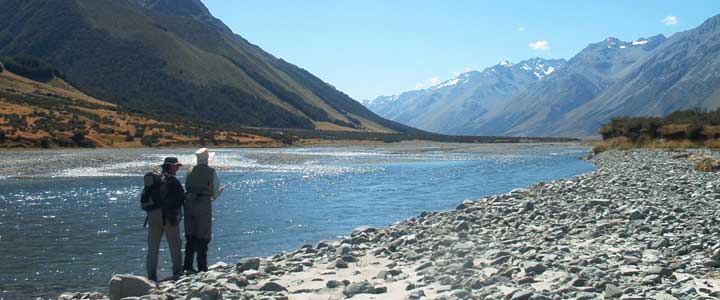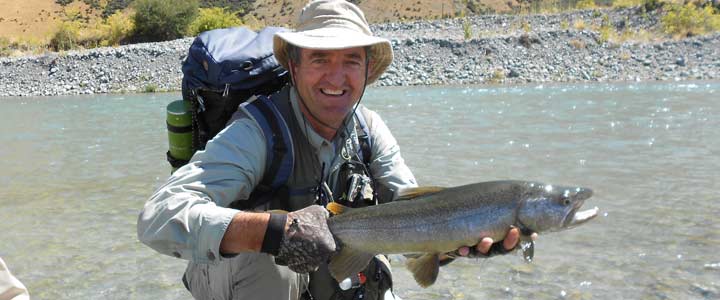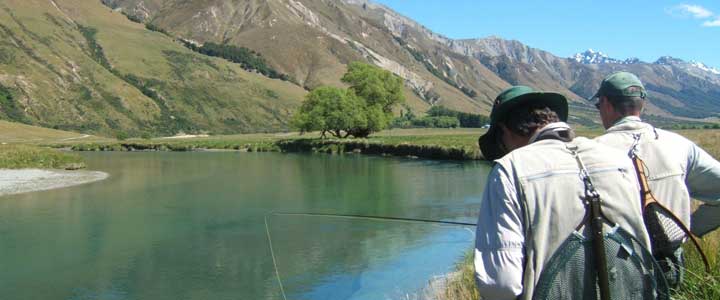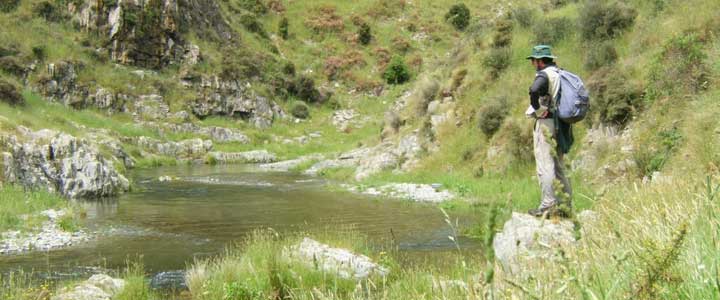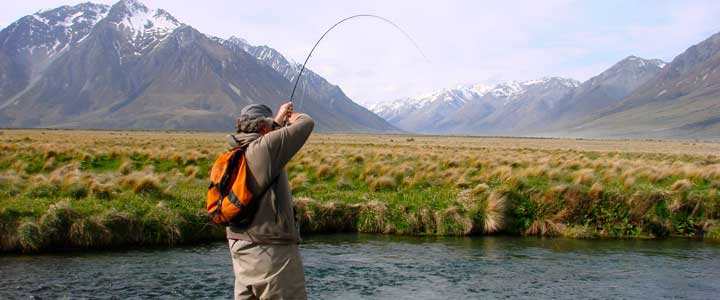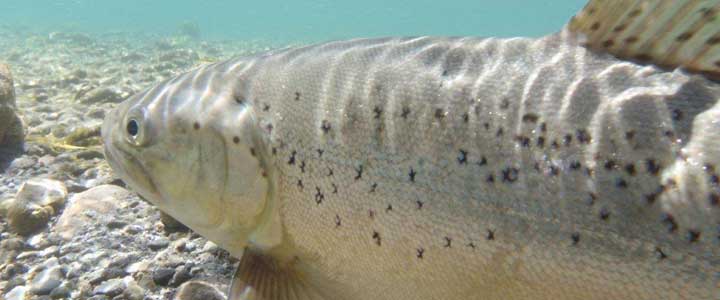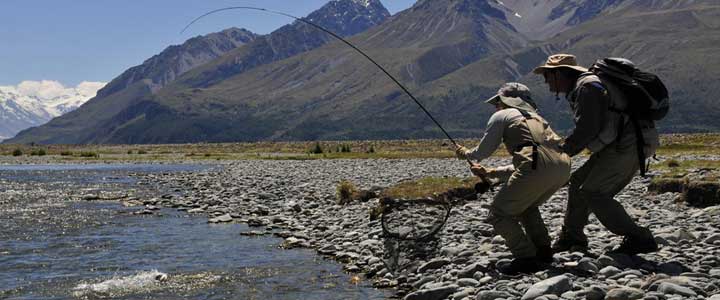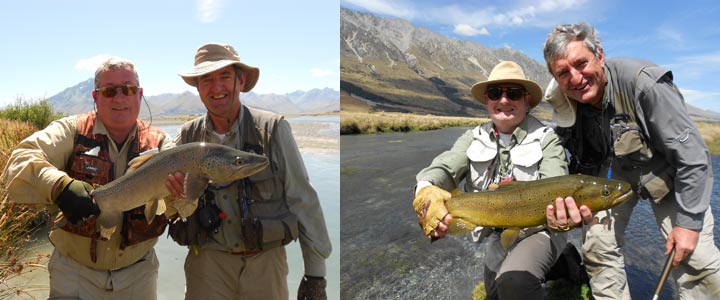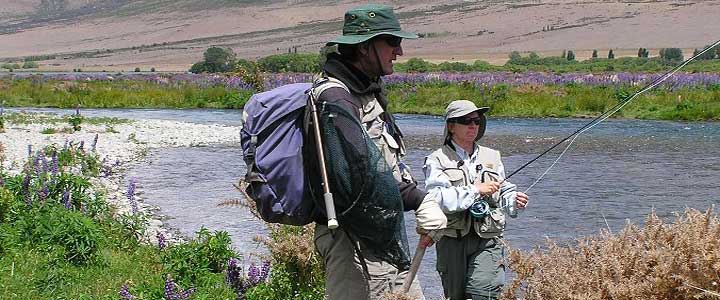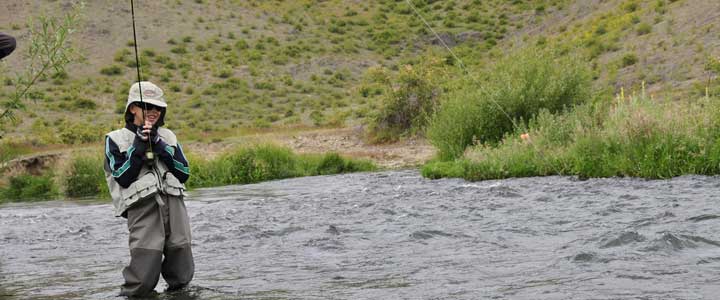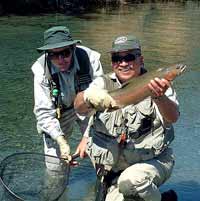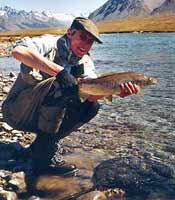Alan's Catch & Release Fishing Technique
As most anglers know, effective catch and release fishing techniques avoid excessive fish fighting and handling times, avoid damage to fish skin, scale and slime layers by nets, dry hands and dry surfaces (that leave fish vulnerable to fungal skin infections), and avoid damage to throat ligaments and gills by poor handling techniques. It's very important that tourists who take cheap flights to New Zealand for the excellent fishing, abide by these practices.
An important aspect of the catch and release technique is to use barbless or crushed barb hooks which allow the quick return to water of the fish before it is too tired or injured.
Alan has his own perfected technique which he uses to successfully catch and release fish back into the water.
Netting
- Use strongest tippet possible to ensure your success but also to shorten the battle with the fish.
- Use barbless or crushed barb hooks. I prefer the latter because the hook does not penetrate so far.
- Use a net (ideally with knotless mesh) to avoid dragging the trout over shallow water and onto rocks etc. Keep your capture under the water all the time until ready for a photo and release.
Holding
- Once netted, squeeze the fish just in front of the tail. The pressure must be firm and applied directly on top of (the back) and underneath. Do not squeeze the sides.
- The trout should, with this pressure applied correctly, be "knocked out" and consequently will not damage itself by struggling. Try not to walk in front of your netted fish, especially over a sandy bottom, so that it is not getting silt and sand in its gills.
- The fly can now be removed with the free hand and, if a photo is desired, get your companion to have the camera ready prior to holding up the fish so that it is kept out of the water for the least time possible. I aim for no longer than 10 seconds and if there is a problem with the camera or pose it is better to replace the trout in the net (under water) until ready again. After all, we wouldn't like being shoved under water for any length of time so look at it from the fish's point of view!
Releasing
- Place the trout back in the water facing the current. If possible, try to choose a spot where the current is not too strong and where the fish has access to cover eg. undercut bank, deep drop-off. Release the pressure while supporting the trout and it should regain its senses and depart quickly if the operation has been carried out correctly.
TIP
I use wet gloves when handling trout to reduce knocking off scales & slime and for better grip, although wet hands will do.
Try this method out next time you wish to release a fish, and you will see for yourself how easy and effective it is.
Happy catch and release fishing!
